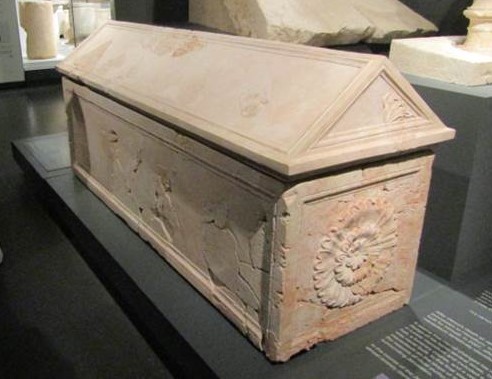As we celebrate the Advent of our Savior, Christmas plays, sermons, and Scriptures remind us of the various characters surrounding Jesus’ birth. We marvel at Mary’s submission, Joseph’s integrity, and the shepherds’ worship.
One of the less desirable individuals in this story is King Herod who brutally massacred innocent babies in Bethlehem attempting to eliminate all competition for his throne. Recent atrocities against Jewish infants by Hamas terrorists make Herod’s cruelty all too real.
This despicable murderer was, however, a great builder. So great, in fact, that he is known today as Herod the Great. Many of the structures erected under his administration endure over 2000 years later. Marine seaports and stone aqueducts along with ruins of palaces and theatres from Masada and Machaerus to Caesarea Marittima highlight his ambition and skill.
Although his greatest architectural achievement, the Hebrew Temple, has been replaced with the Dome of the Rock, another of his enduring monuments remains nearby. Not far from Jerusalem stands Herodium.
Herod built this artificial mountain as another trophy of his legacy and did so with forced labor and confiscated wealth. Excavations on top of the nearly 2500 foot tall peak reveal an elaborate seven story palace with ornate mosaics and frescoes as well as a bathhouse and theatre. Three other towers crown the mountaintop and the structure once dominated the surrounding landscape.
At the base of this enormous mound are the ruins of Lower Herodium. This town once featured a pool complex complete with gardens and fancy porticos in addition to offices and rooms for Herod’s visitors. There was also a magnificent terrace and ramp-way archaeologists now believe was used to transport Herod’s body to its final resting place.
Jewish historian Josephus described how Herod’s body was carried 25 miles uphill from Jericho where he died. He was laid on a golden platform inlaid with jewels. He wore his gold crown and purple robe and the entire army joined the funeral procession along with 500 servants carrying spices.
Even though Josephus declared that this despised leader was buried at Herodium, no one had ever found the exact location until 2007 when archaeologist Ehud Netzer discovered pieces of an ornately carved sarcophagus near the ruins of a massive mausoleum halfway up the mountainside.
This rose red coffin had been smashed to bits and its hundreds of pieces were scattered all around, likely by Jewish rebels anxious for revenge against this deceased tyrant. The limestone box has been reconstructed and we were privileged to see it in the Israel Museum in 2018.
Even though Herod went to great expense and effort to build an incredible monument to himself, very few visit Herodium today. Ironically, tourists and pilgrims flock by the millions to enter the cave just 3 miles west of it in Bethlehem where the baby was born whom he tried to kill.
Millions more make their way six miles north to the Church of the Holy Sepulchre in Jerusalem which houses the empty tomb of this much greater King. In complete contrast to Herod, Jesus made no preparations for His own burial and his tomb was borrowed. Other than a few spices and fresh linens, there were no burial ornaments and no funeral procession.
Even though wealthy Herod went to great lengths to cement his fame, his once elaborate tomb was lost for 2000 years. Conversely, Jesus constructed no monuments nor did He seek to manipulate His own memory. His teachings, miracles, and resurrection all accomplished that for Him.
As we consider the various characters in the Christmas story, may we honor the One who exited His final resting place for He offers resurrection power to all who trust in Him today. There are memorial sites and crypts the world over for many of earth’s leaders, but only Jesus’ tomb is empty! This Christmas, instead of the one with the fanciest grave, seek the One who can get you out of yours! Blessings, George
